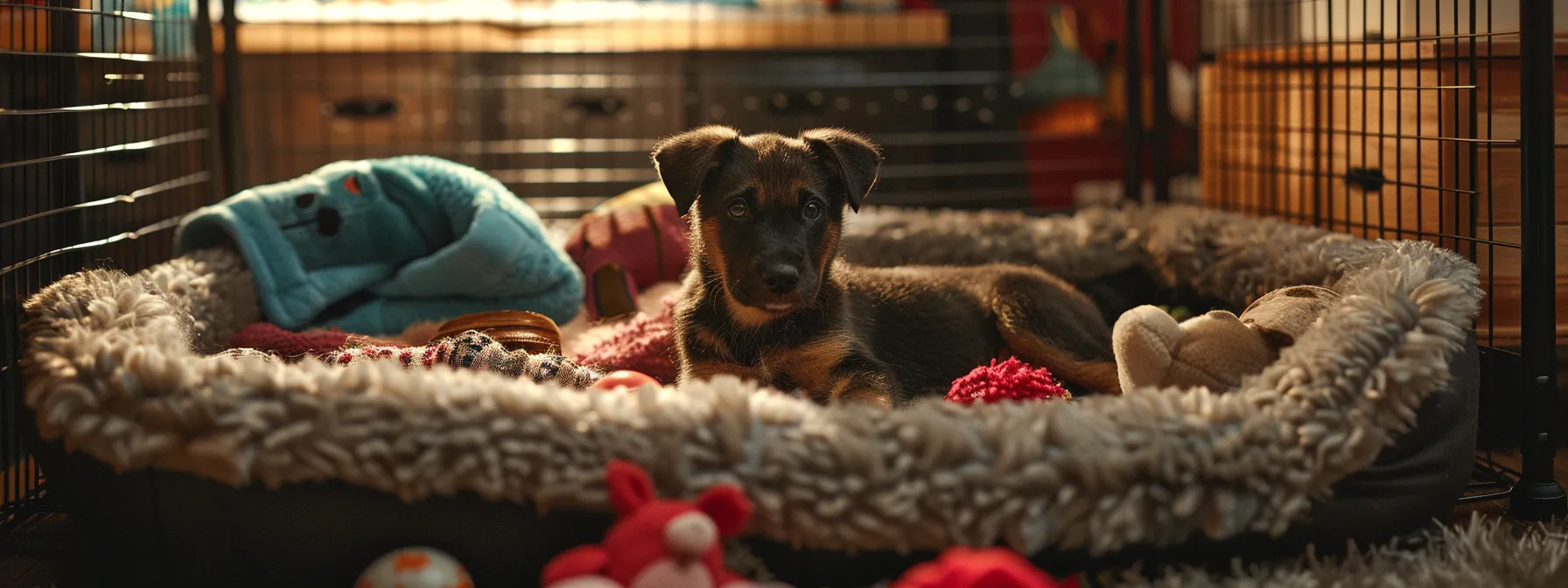Kennel Dogs: Safe and Comfortable Options
Kennel dogs deserve a safe and comfortable space to call their own. Selecting the right kennel ensures your furry companion feels secure and relaxed, whether at home or during travel. A well-chosen kennel provides a den-like environment that caters to your dog's natural instincts. Keep reading to discover essential tips for choosing the perfect kennel, enhancing comfort, and maintaining safety for your canine friend.
Key Takeaways
- Measure your dog from nose to tail and add 2-4 inches for proper kennel sizing
- Choose durable, chew-resistant materials for your dog's kennel to ensure safety and longevity
- Consider ventilation, ease of access, and weather protection when selecting indoor or outdoor kennels
- Add comfortable bedding and familiar items to make your dog's kennel a cozy retreat
- Perform daily inspections of your dog's kennel to catch and address potential safety issues
Choosing the Right Size Kennel for Your Dog

Selecting an appropriate kennel size is crucial for your dog's comfort and safety. A properly sized kennel ensures your furry companion has enough space to move, stand, and rest comfortably. To determine the ideal kennel dimensions, you'll need to measure your dog accurately and consider factors such as growth potential and intended use. Let's explore two key aspects of choosing the right kennel size: measuring your dog from nose to tail and allowing room for movement and growth.
Measure Your Dog From Nose to Tail
To select the right kennel size for your dog, start by measuring from the tip of their nose to the base of their tail. Add 2-4 inches to this measurement to ensure your dog has enough space to turn around comfortably. Remember to measure your dog while they're standing upright, as this will give you the most accurate dimensions for their kennel.
Consider Room for Movement and Growth
When choosing a kennel for your dog, factor in room for movement and potential growth. Select a kennel that allows your dog to stand up, turn around, and lie down comfortably without feeling cramped. For puppies or young dogs, consider their expected adult size to avoid outgrowing the kennel too quickly.
Essential Features of a Safe Kennel
When selecting a kennel for your dog, safety and comfort are paramount. A well-designed kennel should provide a secure environment while meeting your dog's needs. Key features to look for include durable materials that can withstand chewing and scratching, as well as proper ventilation to ensure your dog stays cool and comfortable. Additionally, the kennel should offer easy access for both you and your pet, allowing for stress-free entry and exit. Let's explore these essential elements in more detail to help you choose the best kennel for your furry companion.
Look for Sturdy, Chew-Proof Materials
Choose a kennel made from durable, chew-resistant materials to ensure your dog's safety and the kennel's longevity. Look for options constructed with heavy-duty plastic, metal wire, or reinforced fabric that can withstand your dog's teeth and claws. Avoid kennels with weak points or easily accessible parts that your dog might be tempted to chew on or destroy.
Ensure Proper Ventilation and Accessibility
Proper ventilation and easy access are crucial for your dog's kennel. Choose a kennel with adequate air flow through mesh panels or well-placed vents to prevent overheating and maintain a comfortable environment. Ensure the kennel door opens smoothly and securely, allowing you to easily let your dog in and out without struggle or stress.
The Benefits of Outdoor vs Indoor Kennels

Deciding between outdoor and indoor kennels for your dog involves weighing various factors. Outdoor kennels offer more space and fresh air, while indoor options provide better protection from the elements and closer proximity to you. You'll need to consider how each type impacts your dog's exposure to weather conditions and how efficiently they utilize available space. Additionally, it's important to evaluate the ease of cleaning and maintaining each kennel type, as well as the opportunities they provide for interaction with your pet. By examining these aspects, you can determine which kennel option best suits your dog's needs and your lifestyle.
Compare Exposure to Elements and Space Utilization
When comparing outdoor and indoor kennels, you'll find distinct differences in how they expose your dog to the elements and utilize available space. Outdoor kennels offer more room for your dog to roam and play, but they leave your pet vulnerable to weather extremes and potential predators. Indoor kennels provide better protection from harsh conditions and temperature fluctuations, though they may limit your dog's movement and access to fresh air.
Assessing Ease of Cleaning and Interaction Opportunities
You'll find that indoor kennels are typically easier to clean and maintain, as they're protected from outdoor elements and debris. However, outdoor kennels offer more opportunities for your dog to interact with their environment and engage in natural behaviors. Consider your available time for cleaning and your desire for interaction when choosing between indoor and outdoor options.
Comfort Enhancements for Your Dog's Kennel

You can enhance your dog's kennel experience by adding comfort features that make it feel like home. A cozy and inviting kennel promotes relaxation and reduces stress for your furry companion. By carefully selecting appropriate bedding materials and incorporating familiar items, you create a safe haven that encourages positive associations with the kennel. Let's explore how to choose the best bedding options and add personal touches to make your dog's kennel a comfortable retreat.
Selecting the Best Bedding Material
Choose bedding materials that provide comfort and insulation for your dog's kennel. Opt for washable, durable options like fleece blankets, memory foam pads, or orthopedic dog beds that can withstand frequent use and cleaning. Consider your dog's size, age, and any health issues when selecting bedding to ensure maximum comfort and support.
Adding Toys and Blankets for Familiarity
Make your dog's kennel a familiar and comforting space by adding their favorite toys and blankets. Include items that carry your scent, such as a worn t-shirt or a blanket from your bed, to help your dog feel more secure in their kennel. Rotate toys regularly to keep your dog engaged and prevent boredom during their time in the kennel.
Routine Checks to Keep the Kennel Safe Over Time

Maintaining your dog's kennel safety requires consistent vigilance and regular checks. By implementing a routine inspection schedule, you'll catch potential issues before they become serious problems. Regular checks help ensure your dog's kennel remains a secure and comfortable environment. Identifying wear and tear early allows you to address concerns promptly, preserving the kennel's integrity and your dog's well-being. Let's explore the essential daily inspection points to keep your dog's kennel safe and functional over time.
Daily Inspection Points for Wear or Damage
Check your dog's kennel daily for signs of wear or damage to ensure its ongoing safety. Inspect latches, hinges, and doors for proper functioning and security. Look for any sharp edges, loose parts, or areas where your dog might have chewed or scratched, addressing these issues promptly to maintain the kennel's integrity.
Conclusion
Selecting the right kennel for your dog ensures their safety, comfort, and well-being. A properly sized kennel with essential features like sturdy materials and proper ventilation provides a secure environment for your furry companion. Whether you choose an outdoor or indoor option, enhancing the kennel with comfortable bedding and familiar items creates a positive experience for your dog. Regular inspections and maintenance keep the kennel safe over time, allowing your dog to thrive in their designated space.
